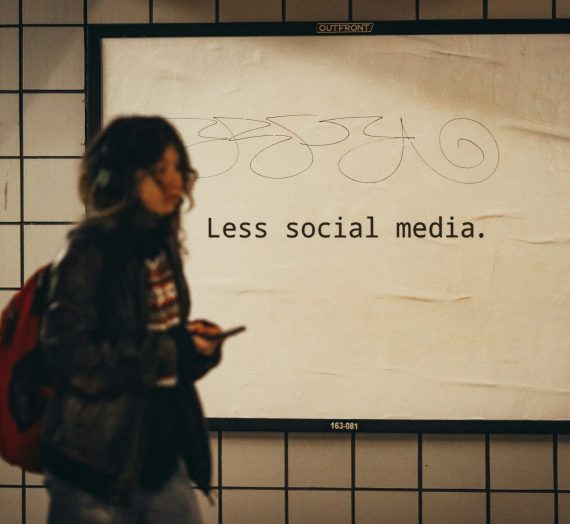Has a headline ever shocked you so much that you just had to click on it? Learning what rage bait is can help you avoid those media traps.
Rage bait is content designed to spark anger or moral outrage, usually drawing readers in with emotionally charged words, phrases, and stories. Increasingly, reporters are creating news headlines with this tactic in mind, fueling frustration and division rather than truth and clarity.
THE RESEARCH
Researchers Jieun Shin, Chris DeFelice, and Soojong Kim investigated the presence of rage bait in the media in their article “Emotion Sells: Rage Bait vs. Information Bait in Clickbait News Headlines on Social Media.” The sample of media included 95 articles that popular news outlets released on their Facebook accounts, specifically about employment and vaccinations. The researchers extracted Facebook audience engagement metrics (such as the number of comments, shares, likes, and other reaction options) for each headline as well. Each headline was coded as information bait (leaving out critical information to make the readers curious), rage bait (provoking outrage to capture attention), or both. Information bait and rage bait both fall under the umbrella of clickbait, or content designed to get users to interact with, or click on, it.
Today, the primary role of a news headline is to attract readers rather than to inform them.
Shin, DeFelice, and Kim (2025)
Importantly, the sources of the sampled headlines differed: 29% of the news outlets researched were legacy media (i.e., the news outlets existed before the internet and originally shared their content in print or broadcast form), while 71% were digital-born media (i.e., the news outlets originated on the internet, without a print option).
In their research, Shin, DeFelice, and Kim found that 14% of the news headlines they studied were information bait and 18% were rage bait. In addition, they found that legacy media outlets were less likely to use rage-bait headlines than digital-born media. At the same time, rage bait was found to have a positive correlation with audience engagement compared to both information-bait and non-clickbait headlines. This suggests that news outlets, particularly digital-born ones, depend on the provocation of people’s anger and other emotional responses for an increase in shares and comments.
THE IMPLICATIONS
For public-media consumers, this research is a call to self-awareness. Many accounts track the interactions each post gets and attempt to replicate similar material to increase their overall traction. This means every time a consumer is emotionally charged enough to click and view or leave a reaction, the content creator gets paid through ads shown to the consumer. Today, the primary role of a news headline is to attract readers rather than to inform them.
How can you stay informed without falling into the trap of misinformed media? The answer is threefold:
- Be cautious as you engage with your sources. If a source isn’t considered legacy media, it’s more likely to use emotional language to pull you in.
- Be aware of the intent of a news story and how it makes you feel. Is a headline creating an emotional reaction? Does it upset, disgust, scare, or shock you? Or does it seem well-balanced, interesting, and informative?
- Take a second to think before engaging. When you comment, share, or interact with this kind of media, you’re adding monetary value to a business model built on outrage. Every click, like, and reply increases its reach, boosts its metrics, and signals demand for more of the same.
The best defense is awareness. Pause, verify, and resist the urge to amplify. Instead of taking the bait, choose to disengage—or better yet, engage with content that informs, educates, and connects rather than divides.
To learn more about rage bait as used in online news sources, read the full article: Shin, Jieun, Chris DeFelice, and Soojong Kim. 2025. “Emotion Sells: Rage Bait vs. Information Bait in Clickbait News Headlines on Social Media.” Digital Journalism 13 (7): 1271–1290. https://doi.org/10.1080/21670811.2025.2505566.
-Megan Beals, Stella Hunter, Alyssa Knutti, Elizabeth Reynolds, and Mia Todd, Netiquette
FEATURE IMAGE BY ALEX GREEN
Find More Research
Take a look at Jonah Berger, Wendy W. Moe, and David A. Schwiedel’s (2023) article for more background on how emotional responses hold our attention, and potential alternatives to increase engagement without resorting to rage bait. “What Holds Attention? Linguistic Drivers of Engagement.” Journal of Marketing 87 (5): 793–809. https://doi.org/10.1177/00222429231152880.
See the research done by Robert van Krieken (2024) that discusses the civil/uncivil dichotomy and emotionally charged language found within public discourse in modern times, especially in politics. “The Age of Anger and Social Media: Elias, Technology, Civilizing/Decivilizing Processes and Ressentiment.” Theory, Culture & Society, 41 (7–8): 19–39. https://doi.org/10.1177/02632764241299767.
For more information about clickbait and how it influences users and their behavior, check out the study done by Anna-Katharina Jung et al. (2022). “Click me…! The influence of clickbait on user engagement in social media and the role of digital nudging.” PLOS One, 17 (6). https://doi.org/10.1371/journal.pone.0266743.




